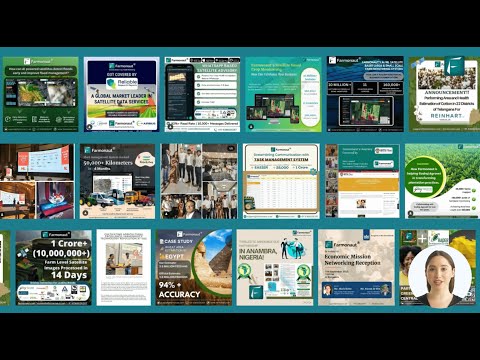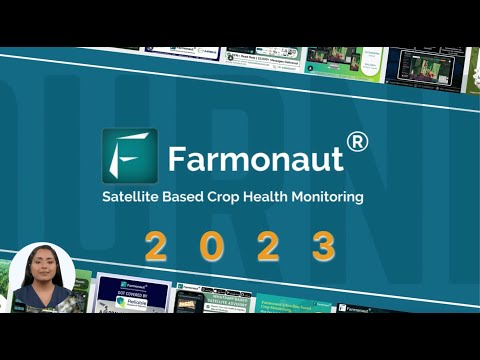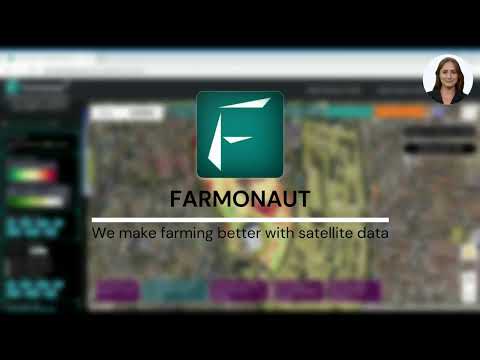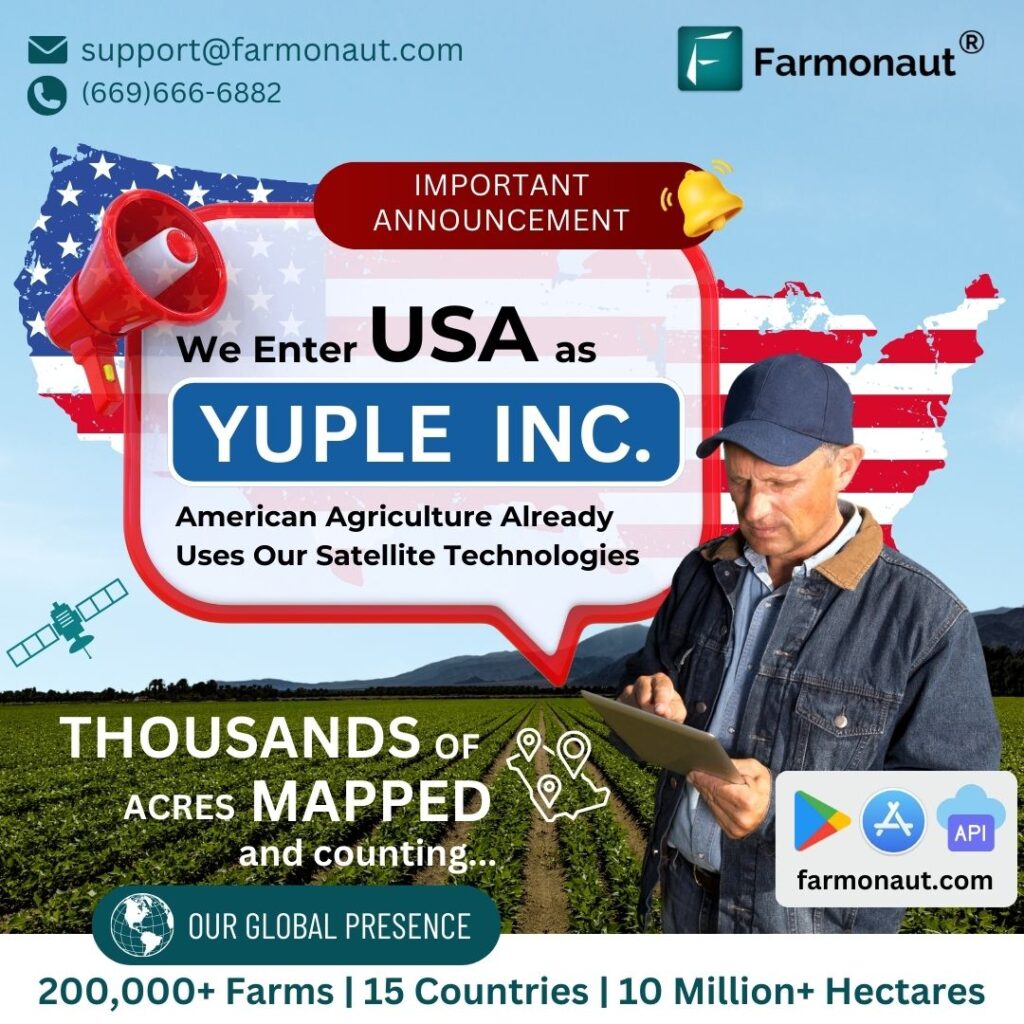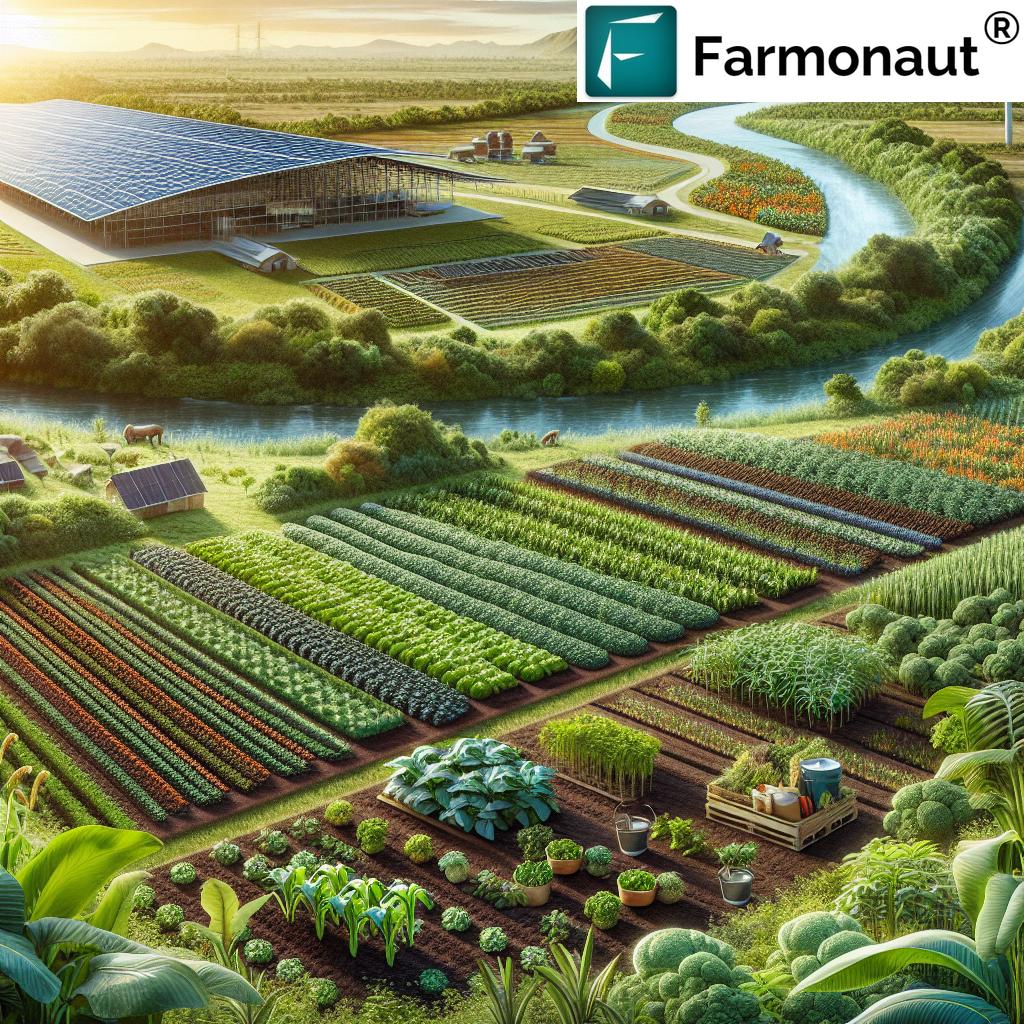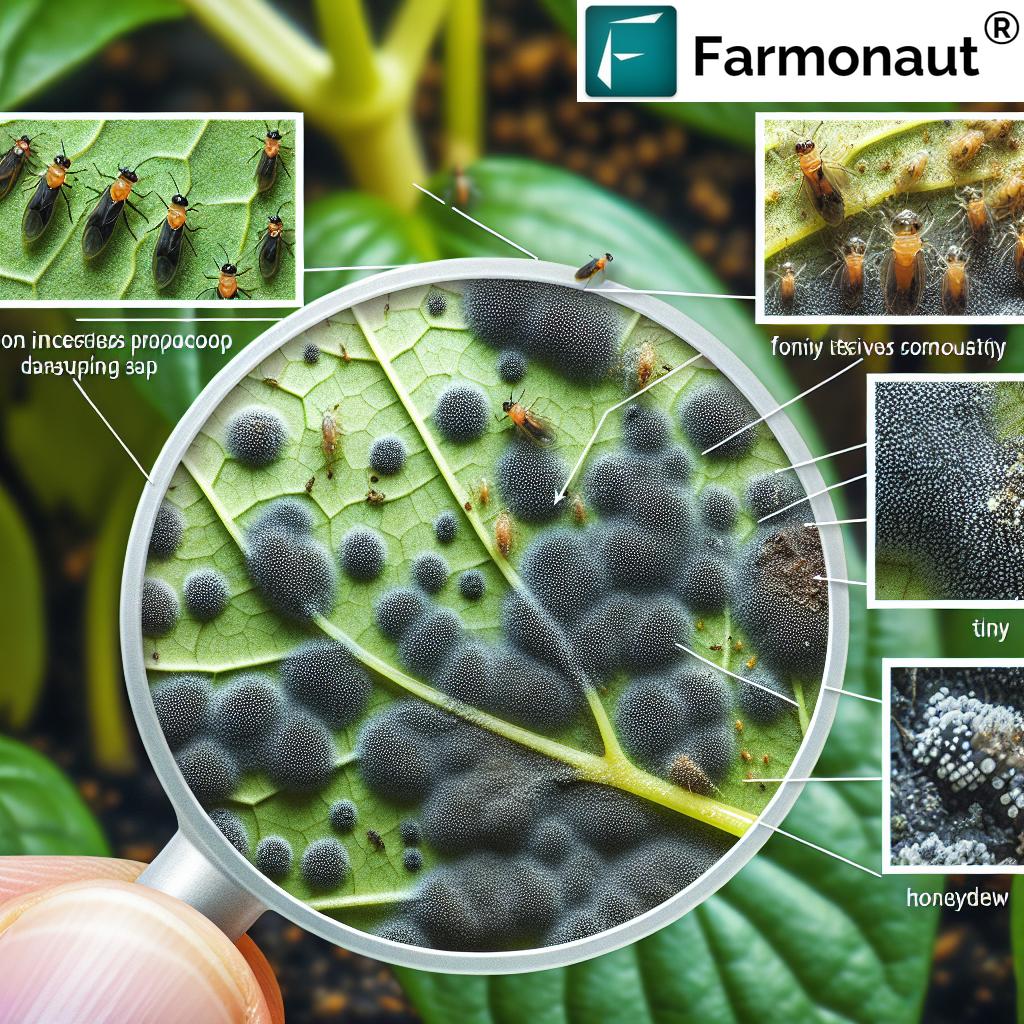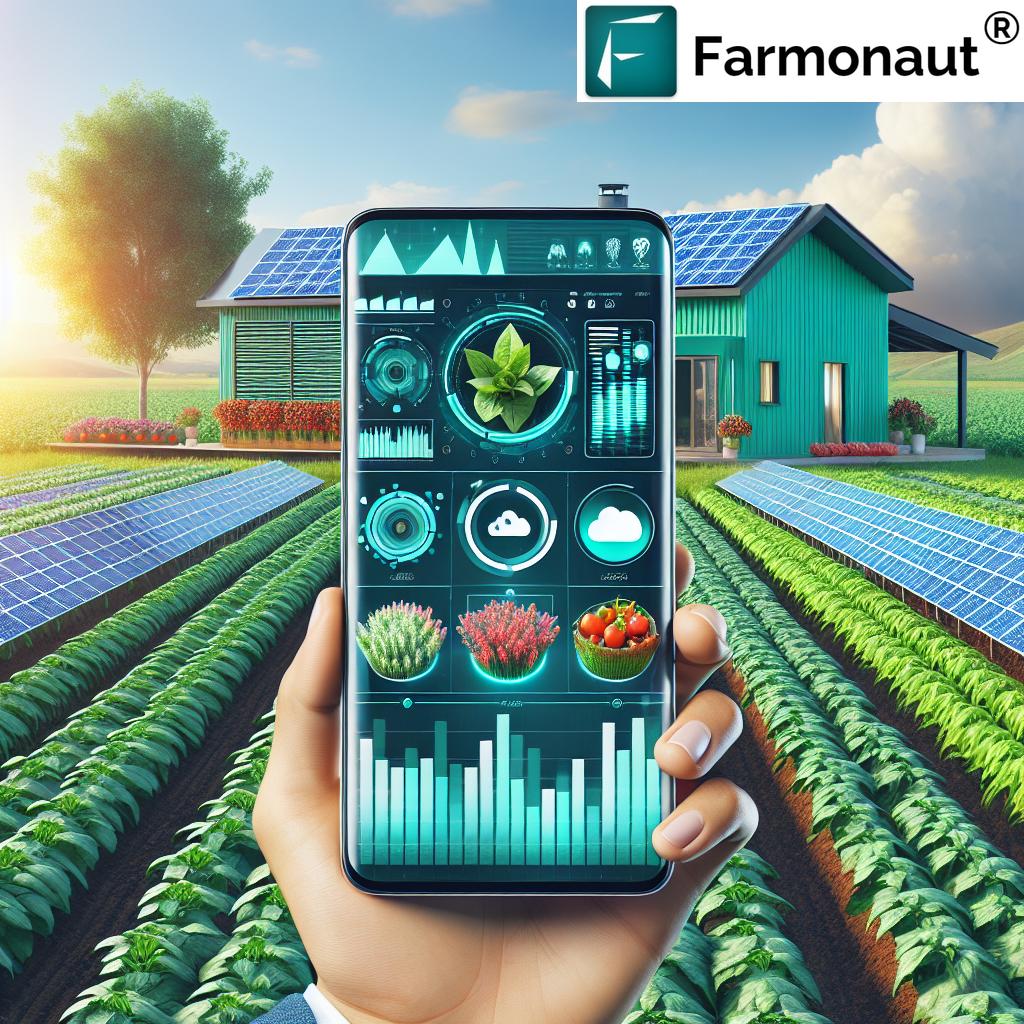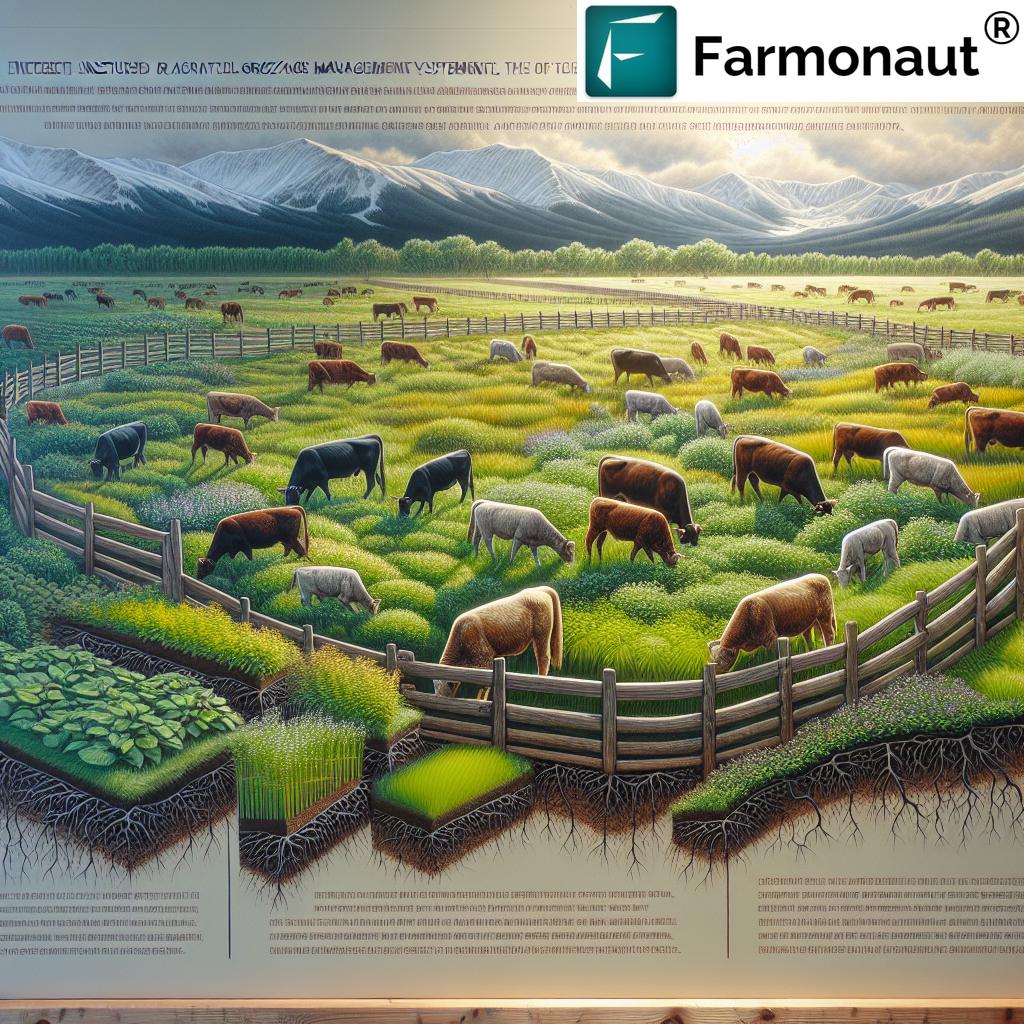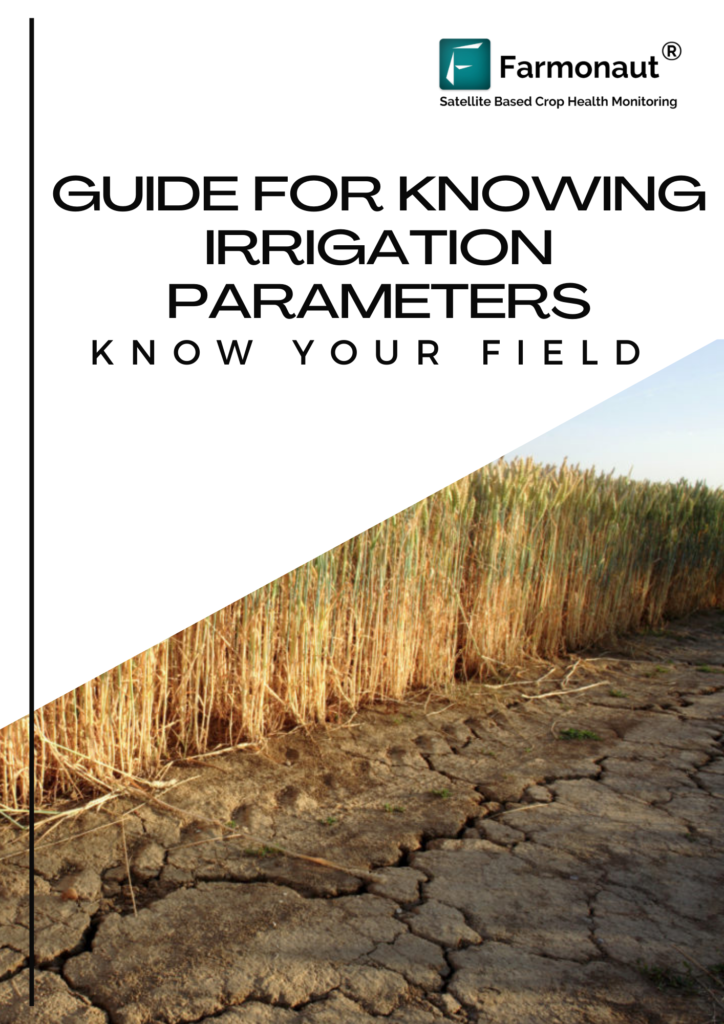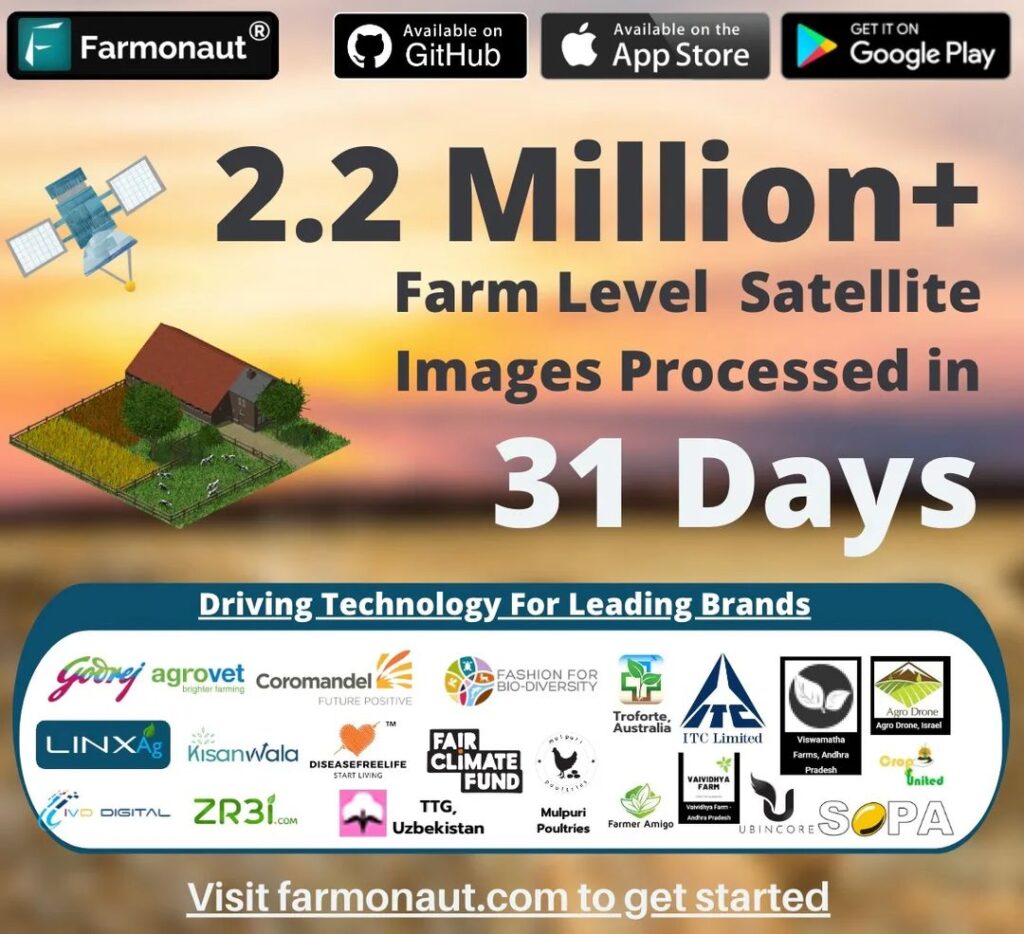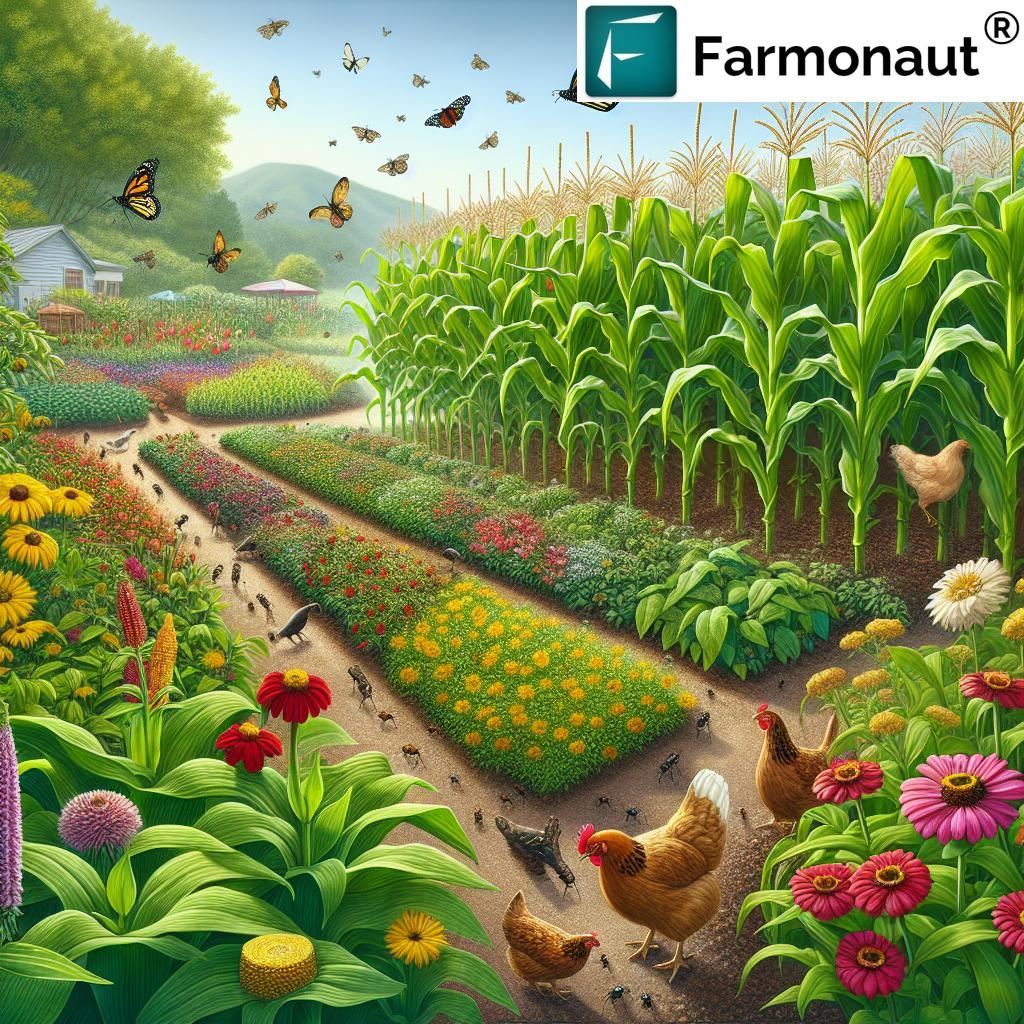Table of Contents
- Introduction
- Trivia: The Digital Shift in Agriculture
- Information Dissemination and Knowledge Sharing
- Market Access and Direct Sales Transformation
- Consumer Engagement, Advocacy, and the Farming Community Online
- Youth Engagement in Farming and Career Inspiration
- Comparison Table of Social Media Impacts in Agriculture
- Challenges and Considerations in Social Media in Agriculture
- How Digital Platforms for Farmers Like Farmonaut are Empowering the Agricultural Sector
- FAQ: Social Media’s Influence on Agriculture
- Conclusion: Embracing the Digital Future of Agriculture
How Does Social Media Affect Agriculture? Shocking Truths!
Social media in agriculture is rewriting the rules of how we share agricultural knowledge, market products, empower communities, and advocate for sustainable farming practices. The digital revolution sparked by platforms like Facebook, Instagram, YouTube, and TikTok is creating both unprecedented opportunities and new challenges for farmers, agribusinesses, and agricultural consumers across the globe. As we dig into these shocking truths, it becomes clear that digital platforms for farmers are more than technological novelties: they are reshaping the very fabric of the farming community.
Information Dissemination and Knowledge Sharing: The Digital Classroom for Farmers
We are living in an era where information dissemination in agriculture has never been faster or more accessible. Social media in agriculture enables farmers, agronomists, experts, and even enthusiastic consumers to become active members of vibrant farming groups, channels, and communities online.
Previously, agricultural knowledge was slowly transmitted through word of mouth or institutional training. Today, if a farmer in Ghana faces a pest outbreak, or a grower in Nigeria is seeking innovative pest control strategies, all they need is a smartphone—and access to platforms like Facebook, WhatsApp, or YouTube—for near-instant advice and solutions.
How Social Media in Agriculture Enhances Knowledge Exchange
- Farmers as Content Creators: We see more and more agricultural producers sharing their practices, techniques, and outcomes to benefit others—creating a new wave of peer-to-peer learning.
- Expert Channels and Groups: Agronomists, scientists, and agricultural experts run channels dedicated to crop management advice, pest control updates, and sustainable farming techniques.
- Real-Time Discussion: Platforms like WhatsApp facilitate immediate exchange of advice, enabling members of the farming community online to discuss issues and brainstorm solutions collaboratively.
- Localized Knowledge: Content is often tailored to regional needs; for instance, cocoa farmers in Ghana rely on local Facebook groups for best irrigation, pest management, and market updates.
- Continuous Learning: Short videos, infographics, and interactive posts on Instagram and TikTok make agricultural education more digestible and accessible, fueling lifelong learning for farmers of all ages.
A study in Ghana found that 57.65% of farmers use social media for implementing improved farming practices, with 89.38% reporting that it enhances their agricultural outcomes. From achieving better pest control strategies to adopting new ways of increasing yields, the digital shift is undeniable.
Key Platforms Driving Knowledge Sharing
- Facebook: Home to hundreds of agriculture-focused groups where farmers exchange advice daily.
- WhatsApp: Enables quick coordination between farmers, agronomists, and suppliers—often used for last-minute market or weather updates.
- YouTube: Farmers and experts upload detailed “how-to” videos on innovative farming practices, machinery maintenance, crop rotation, and more.
- Instagram & TikTok: Short-form content has carved a niche, especially among youth, showcasing daily farm routines, crop health techniques, and sustainable agriculture stories.
Market Access and Direct Sales Transformation: Reimagining Agricultural Marketing on Instagram and Beyond
The agricultural marketing landscape is experiencing a revolution as social media platforms open up new, direct channels between farmers and consumers. In the past, many farmers had to rely heavily on lengthy supply chains, multiple intermediaries, and high advertising costs—shrinking profit margins and limiting brand control.
How Direct Sales of Farm Products Flourish Online
- Showcasing Produce: Instagram’s visual format lets farmers showcase their produce, highlight freshness, seasonality, or organic farming credentials, and build a loyal digital following.
- Brand Building: Farmers create recognizable brands by sharing their story, mission, and daily life, deepening trust with consumers.
- Customer Engagement: Through comments, DMs, and stories, consumers can ask questions about products, practices, and availability, fostering loyalty.
- Advertising Cost Reduction: Digital marketing reduces, or even replaces, high traditional advertising costs. Research in South-South Nigeria highlights that Instagram and Facebook use is linked to decreased advertising expenses and higher sales turnover for farm businesses (study).
- Order & Delivery Coordination: WhatsApp and Facebook facilitate order placements and logistics, making the buying process seamless for both farmers and consumers.
Embracing digital platforms for farmers means more than selling online—it offers a new level of transparency, traceability, and rapid response to consumer trends. Ultimately, it contributes to cost reduction in agricultural marketing and greater control over the farming business.
Consumer Engagement, Advocacy, and the Farming Community Online
Social media has also empowered agricultural producers to foster real connections with urban and rural consumers. Through storytelling, transparent content, and grassroots advocacy, farmers are now able to humanize agricultural practices, correct misconceptions, and highlight their unique challenges and triumphs.
The Rise of Ag-vocacy: From “Felfies” to Community Education
- Personal Brand & Advocacy: Through “day-in-the-life” posts, farmers showcase the realities of farming, demystify complex techniques, and address consumer concerns about crop safety or animal welfare.
- “FarmTok” Movement: TikTok’s FarmTok connects millions worldwide, where youth-driven creators share innovative practices, sustainable farming techniques, and even farm humor.
- Community Groups: Public Facebook communities like “Keeping it Real: Through the Lens of a Farm Girl” have amassed tens of thousands of followers, revealing the public’s hunger for authentic farm stories and transparent agricultural content (article).
- Bridging the Urban-Rural Divide: Social platforms offer urban consumers a firsthand view into rural life, building understanding and appreciation for the food supply chain and farming industry.
Real-time dialogue between consumers and producers creates feedback loops that drive better agricultural products, practices, and policy advocacy—strengthening the identity and visibility of our farming community online.
“Digital platforms have increased direct farmer-to-consumer engagement by 40% in the past five years.”
Youth Engagement in Farming and Career Inspiration: Inspiring the Next Generation
One of the lesser-acknowledged, yet most profound, impacts of social media in agriculture is its ability to attract and inspire youth—inviting them to see farming as a modern, rewarding, and vital career path. Young influencers on platforms like Instagram and YouTube normalize the farming lifestyle, showcase cutting-edge technology & innovation, and counter stereotypes.
How Social Media Makes Agriculture Cool for the Next Generation
- Showcasing Young Farmers: Youth share daily routines, challenges, innovations, and triumphs, serving as relatable role models for other young would-be farmers.
- Celebrating Diversity: Initiatives like The Invisible Farmer Project in Australia use Instagram and blogs to highlight women and marginalized identities in agriculture—expanding the profession’s appeal.
- Mentorship & Networking: Social channels enable older generations to mentor the next, and for young people to ask questions, share new methods, and establish professional connections.
- Innovative Farming Practices: Cutting-edge agricultural technology, including precision agriculture and digital farm management tools like those from Farmonaut, are made accessible and desirable to tech-savvy audiences.
For many rural youths—and increasingly, for urbanites interested in agricultural entrepreneurship—farming is emerging as a high-tech, future-ready career. This is vital for food security and innovation across the agricultural sectors.
Comparison Table of Social Media Impacts in Agriculture
| Social Media Platform | Estimated % of Farmers Using Platform | Main Agricultural Uses | Estimated Impact |
|---|---|---|---|
| 62% | Knowledge sharing, crop management advice, product marketing, consumer engagement | 40% improvement in information dissemination, 30% increase in direct sales | |
| 50% | Farm group coordination, rapid updates, logistics, market access | 35% faster response to farming emergencies, 25% increase in market updates | |
| YouTube | 39% | Education tools, innovative techniques, product demonstrations | 60% rise in visual learning adoption, 28% better technology uptake |
| 33% | Brand building, marketing, consumer engagement, youth engagement in farming | 25% rise in customer loyalty, 15% improved youth participation | |
| TikTok | 21% | Youth engagement, advocacy, farming community storytelling | 12% growth in agvocacy content, 18% improved recruiting of youth |
Challenges and Considerations in Social Media in Agriculture
While the impact of digital platforms for farmers is primarily positive, significant challenges remain that must be confronted to maximize their transformative potential.
1. Misinformation: Combating Myths and Fake Content
- Content Quality: Not all information shared online is accurate. Misinformation about GMO safety, pest control, fertilizer use, or animal welfare can go viral—sometimes with severe consequences for both farmers and consumers.
- Need for Expert Moderation: Relying on agricultural experts to actively participate and correct false information is crucial for community health and trust.
2. The Digital Divide: Unequal Access to Technology and Data
- Data Costs: As highlighted in Ghana, high mobile data costs can inhibit adoption of social media tools, especially in rural areas. Connectivity remains patchy in some regions.
- Digital Literacy: Not all farmers possess the skills or confidence to leverage platforms, creating gaps in who can benefit from these innovations.
- Infrastructure: Weak internet infrastructure can make real-time farm management and online customer engagement less effective for those in underserved zones.
3. Privacy, Security, and Platform Longevity
- Data Security: With increased digital activity comes greater exposure to security threats. It’s vital farmers understand the basics of data privacy on these platforms.
- Platform Evolution: Changing platform algorithms or features may unexpectedly impact a farmer’s or agribusiness’s reach to customers, requiring adaptability.
How Do We Overcome These Challenges?
- Continued Digital Education: Investing in digital skills training—especially for rural and older farmers—is essential.
- Affordable Data and Infrastructure: Advocating for more affordable and accessible mobile data packages for the agricultural community, and ongoing network expansion in rural regions.
- Proactive Ag-vocacy: Encouraging community leaders and agricultural professionals to guide conversations, correct falsehoods, and encourage responsible digital citizenship on all platforms.
How Digital Platforms for Farmers Like Farmonaut are Empowering the Agricultural Sector
While social media platforms provide a foundation for connection, learning, and engagement in agriculture, advanced digital agricultural education tools and precision management systems—like those offered by Farmonaut—are taking farm productivity and sustainability to the next level.
Let’s explore how new-generation digital platforms for farmers complement social media, delivering data-driven solutions, cost efficiency, and transparency.
1. Satellite-Based Crop Health Monitoring
Farmonaut uses multispectral satellite imaging to monitor crop health, providing insights into vegetation status, soil moisture, and pest risks. These innovative farming practices enable farmers to maximize yields, fine-tune irrigation, and optimize input costs.
Learn More: About Large-Scale Farm Management.
2. AI-Based Advisory Systems
Through AI-driven tools like Jeevn, Farmonaut delivers real-time weather forecasts, crop management strategies, and actionable advice, customized for individual farms.
Discover Benefits: Crop, Plantation & Forest Advisory
3. Blockchain-Based Product Traceability
Blockchain ensures transparent tracking of produce from farm to consumer, increasing trust, reducing fraud, and enabling supply chain integrity.
See Solutions: Farmonaut Product Traceability
4. Resource, Fleet, and Carbon Management
Farmonaut’s Fleet Management optimizes logistics, cuts operational costs, and ensures safe, efficient running of agricultural machinery. Meanwhile, carbon footprint tracking tools help agribusinesses meet sustainability goals and monitor emissions in real time.
5. Affordable, Accessible Precision Agriculture
Unlike traditional, hardware-intensive precision farming, Farmonaut’s solutions are delivered via Android, iOS, web app, and API—scalable for every size of farm and every region, helping bridge the digital divide.
API Access: For businesses, developers, or organizations who want to integrate satellite and farm data, Farmonaut provides powerful API solutions and developer documentation.
6. Crop Loan and Insurance Verification
Satellite evidence-based reports streamline crop loan and agricultural insurance for financial institutions, cutting down fraud and making credit more accessible to rural farmers.
Learn about Crop Loan & Insurance Solutions
These digital tools and platforms work hand-in-hand with social media-driven communication. As we continue to leverage the best of both worlds—peer-to-peer connection and AI-powered analytics—the global agricultural sector stands poised for a new era of productivity, resilience, and outreach.
FAQ: Social Media’s Influence on Agriculture
Q: How has social media changed farming practices in developing countries?
Social media enables farmers in areas like Ghana and Nigeria to rapidly access crop management advice, share innovative farming practices, and respond to market shifts—sometimes before traditional extension agents can reach them.
Q: Which platform is most beneficial for agricultural marketing on Instagram and other networks?
Instagram excels with visual storytelling, brand building, and engaging consumers. Facebook and WhatsApp, however, are more widely adopted for real-time updates and group advice. Using a combination provides the best results.
Q: What are the main risks of using social media in agriculture?
The biggest risks are misinformation, data privacy, digital inequality, and the unpredictability of social media algorithms. Digital education, expert moderation, and supplementary use of dedicated agricultural apps can help mitigate these problems.
Q: Can youth engagement in farming be improved through digital tools?
Yes! Platforms like TikTok, YouTube, and Instagram—including educational technology and apps—are making farming professions more visible, relatable, and attractive to younger generations.
Q: How do subscription-based digital platforms for farmers, like Farmonaut, differ from using general social media?
General social media focuses on community, learning, and promotion, while Farmonaut provides data-driven crop monitoring, AI-based advice, blockchain traceability, and sustainability tracking—empowering evidence-based decisions and supply chain integrity.
Conclusion: Embracing the Digital Future of Agriculture
We stand on the brink of an agricultural revolution powered by social media in agriculture and cutting-edge digital solutions. Farmers, agribusinesses, and consumers have embraced these platforms not only as communication and marketing tools but as engines of continuous learning, business growth, and sustainability.
The bottom line? Social media has amplified the voices of farmers, enabled direct sales, made agricultural knowledge more democratic, and inspired new generations to pursue farming careers. At the same time, specialized digital platforms for farmers like Farmonaut provide the precision, analytics, and technological backbone needed to meet the demands of modern agriculture—delivering cost reductions, improved outcomes, and greater sustainability.
As digital access grows and the community continues to innovate, the line between traditional agriculture and tech-driven agribusiness will blur ever further—fueling a future where resilient, connected, and innovative farming is the new norm. Let’s cultivate this future together.






